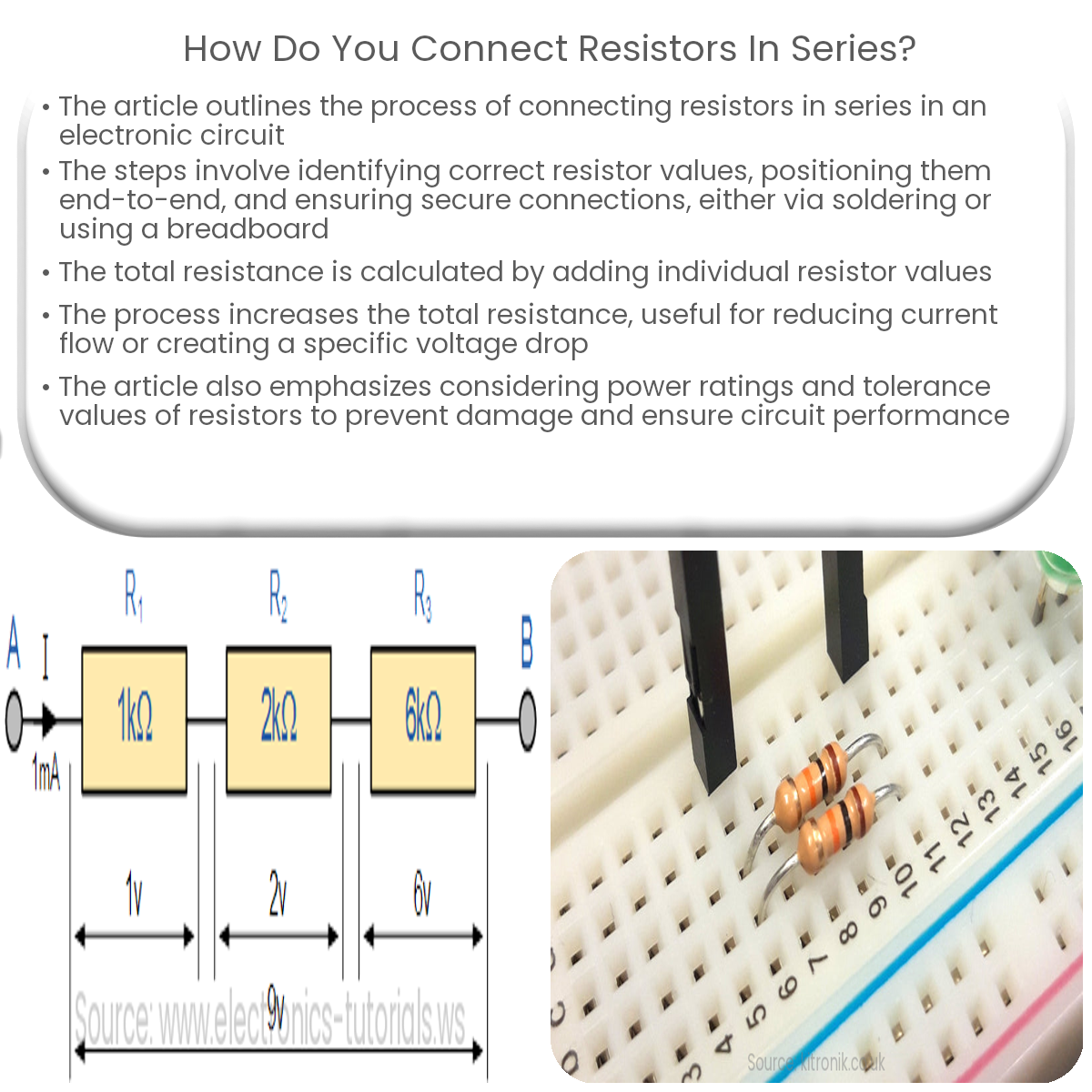Connecting resistors in series involves placing them end-to-end, soldering or connecting leads, and calculating the total resistance by adding values.
Connecting Resistors in Series
Resistors are fundamental components in electronic circuits, used for controlling the flow of electric current. When resistors are connected in series, the total resistance increases, which reduces the overall current flow. In this article, we will discuss the process of connecting resistors in series.
Step-by-Step Guide to Connect Resistors in Series
-
Identify the resistors: First, gather the resistors you want to connect in series. Ensure they are the correct values for your intended application.
-
Position the resistors: Place the resistors on a flat surface or a breadboard, aligning the leads of each resistor end-to-end. The end of one resistor should be in direct contact with the end of the next resistor.
-
Connect the leads: Solder the leads together or use a breadboard to create a secure connection between the resistors. Ensure that there is no unintended contact between other components in your circuit.
-
Calculate the total resistance: To find the total resistance of the series configuration, add the resistance values of each resistor together:
Rtotal = R1 + R2 + … + Rn
Where Rtotal represents the total resistance, and R1, R2, …, Rn represent the resistance values of the individual resistors.
Considerations When Connecting Resistors in Series
-
Connecting resistors in series increases the total resistance, which can be useful for reducing the current flow in a circuit or for creating a specific voltage drop across the resistors.
-
When resistors are connected in series, the current flowing through each resistor is the same. However, the voltage across each resistor will differ, depending on its resistance value.
-
Ensure that the power ratings of the resistors are appropriate for the application. Resistors can overheat and become damaged if the power dissipation exceeds their specified rating.
-
When designing a circuit, consider the tolerance values of the resistors, as this can impact the overall performance and accuracy of the circuit.
In conclusion, connecting resistors in series is a straightforward process that requires proper identification of resistor values, positioning, and secure connections. By following these steps and keeping the above considerations in mind, you can successfully create a series resistor configuration for your electronic circuit.


